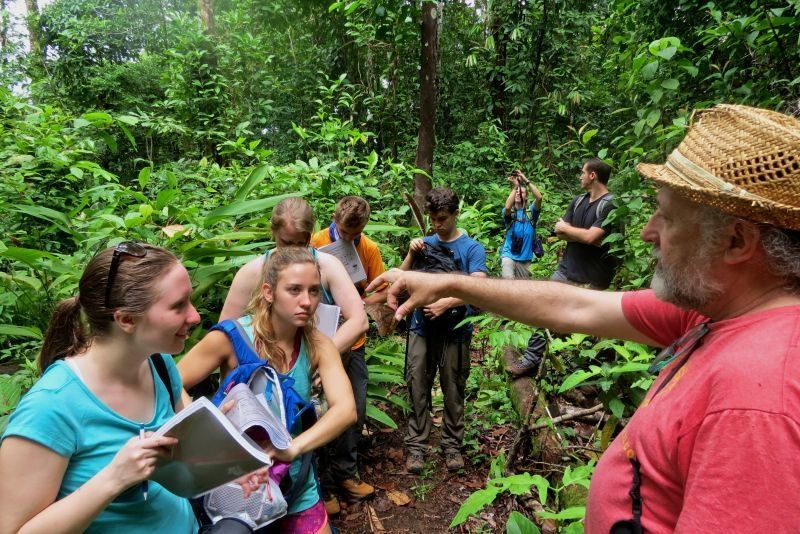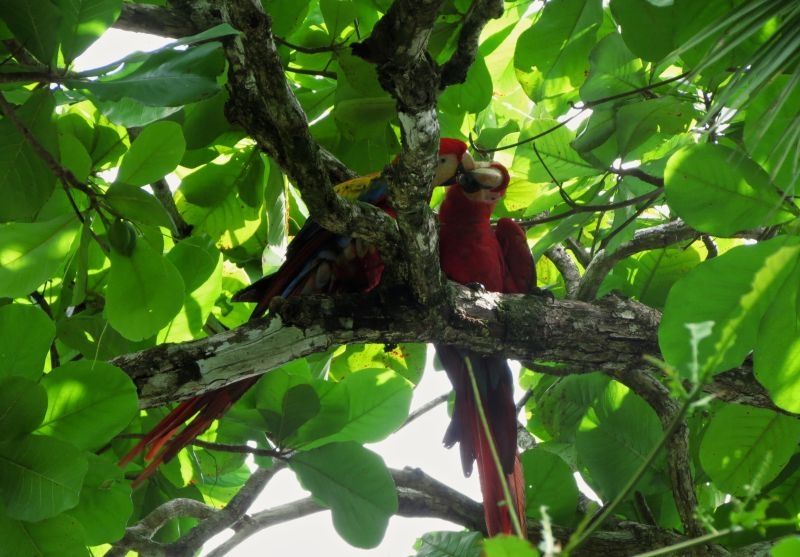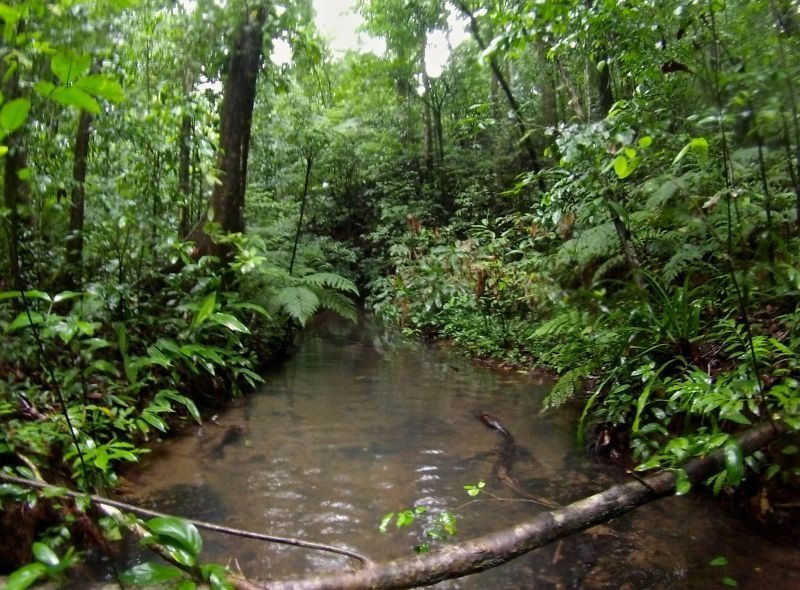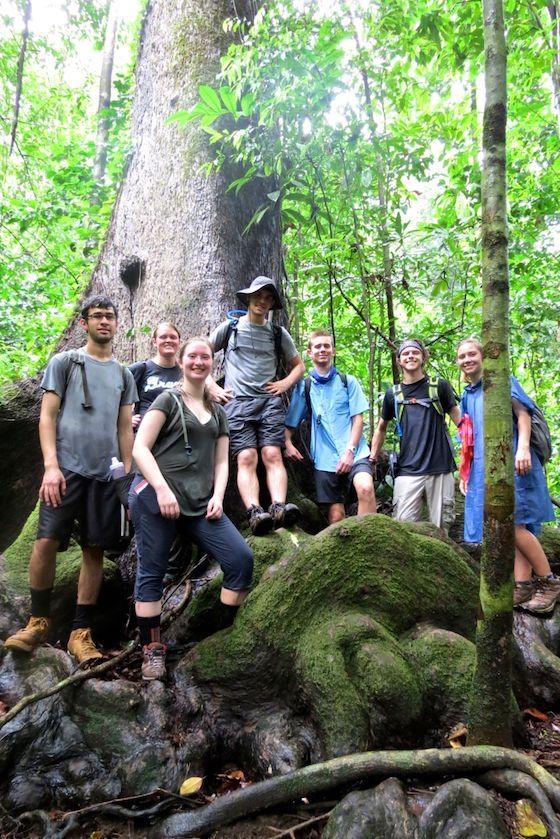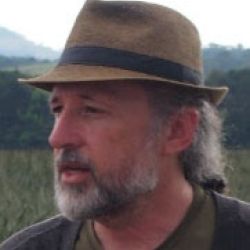The Wet Forest of Corcovado National Park
After spending a brief time at the habitats of Paramo and Mangroves it was time to move to Corcovado, here we will be spending a few days exploring this amazing habitat full of life and many species of plants and animals to discover. The first day we got to learn about beach ecology and explore the forest around Corcovado.
Alan teaching the group about butterfly ecology with a live example of a Morpho butterfly.
A pair of Scarlet Macaws (Ara macao), here perched in the tree that is their favorite food item, the Beach Almond (Terminalia catappa), reason why they are usually seen along the coast line.
An important aspect of a tropical ecologist life is to create a baseline of how a tropical forest look; in a world in which a big part of the primary forest have disappear and most of the tropical forest is secondary growth, it is really important to experience with all of our senses an undisturbed tropical forest and get a point of comparison, this will give us a better idea of the importance on preserving untouched forest and to let disturbed forest to growth and regenerate.
With this idea we had a 16 km hike (about 10 miles) in which the biggest part of the hike was along a gorgeous patch of undisturbed primary forest, here you could see lots of animals (birds, lizards, frogs, insects, mammals) and trees that reach a hight of 50 or 60 meters tall. The students get to walk at their own pace and experience this hike individually, getting immerse and feeling this forest in a unique way.
A stream in the middle of the primary forest of Corcovado.
Vikram Norton (University of Massachusetts-Amherst), Sarah Aitken (University of Pennsylvania), Amanda Ogden (Utah State University), Derek Frank (University of Minnesota-Twin Cities), Drew Rosso (University of Notre Dame), Jimmy Webb (University of Arkansas), and Christine Bradley (California Polytechnic State University) standing at the roots of a big tree at Corcovado.
View of the primary forest.
During our last night in Corcovado we went on a night hike and got to know some of the nocturnal fauna found in the area, several species of frogs, many species of spiders and insects and some mammals were our company during the time we went out in the dark, with our flashlights of course!
The Smokey Jungle Frog (Leptodactylus savagei), the second largest species of frog in Costa Rica.
The Central American Woolly Opossum (Caluromys derbianus), one of the ten species of marsupials found in Costa Rica.
Related Posts
CIEE Monteverde Campus Used in Insect and Light Research Study
Have you ever wondered why insects are drawn to artificial light? From campfires to porch lightbulbs, moths and other insects appear to congregate around these sources of light as soon... keep reading
Our program through the eyes of a Student
Our Summer student Maddie Beale from the State University of New York at Fedonia wrote a blog about how she found us, the process of choosing our program and the... keep reading
Independent Research Projects: Part I
The Tropical Ecology & Conservation students are working on their independent projects right now, many different ecology topics are being cover that involve both field and lab work. From Leaf-cutting... keep reading
